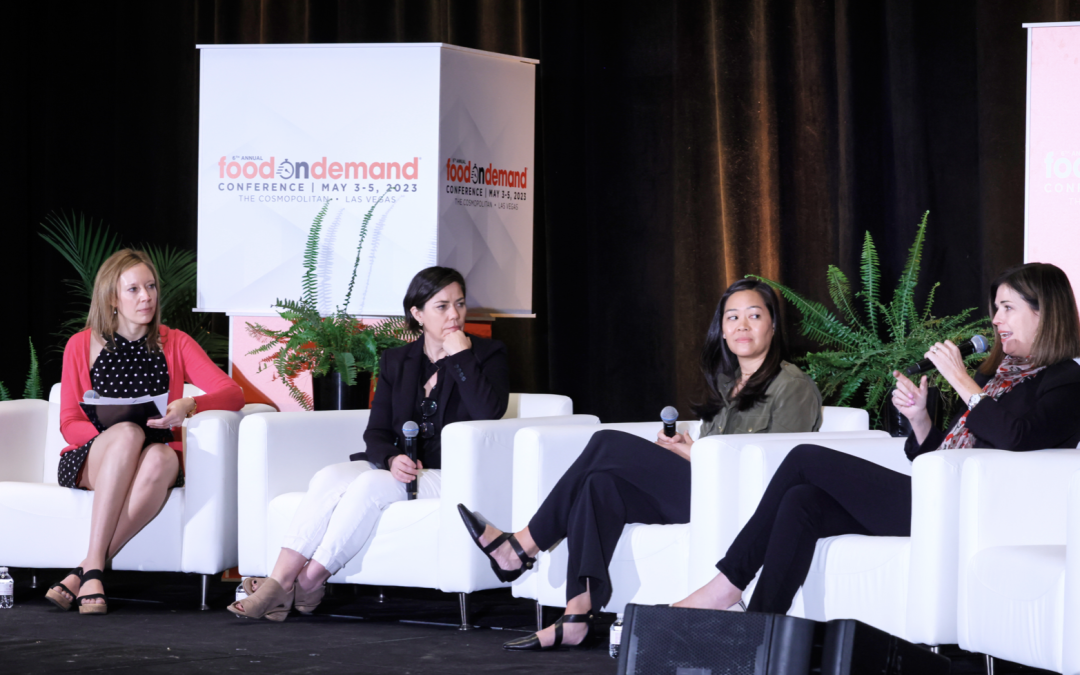Websites, apps and social media have given more options for consumers to connect with brands than just stopping in at their local brick-and-mortar restaurant.
Customers who do so are referred to as omnichannel guests, and marketing to them was the focus of a panel Wednesday at the 2023 Food On Demand Conference. Moderated by Laura Michaels, editor in chief at Franchise Times, the panel featured several marketing professionals, including Steph So, head of digital experience at Shake Shack.
During the session, So said while the many channels available to consumers may be different, the brand’s identity should be consistent.

Steph So, head of digital experience at Shake Shack, discusses the importance of consistent brand identity across channels.
“For the digital experience, on our website and our app, we’ve really been working to personalize it,” So said. “We make it a point that you want to speak to them in the same voice online as you do when you meet them in the store. That should be something consistent for the guest.”
“We want to get to the customer where they are and speak to them in a way they want to be spoken for,” said Marianne Radley, chief marketing officer at Smoothie King and another panelist. “I’m talking about how they want to receive information and the best ways to educate them on our brand in a voice they want to be talked to across all channels. That’s the difference between multi-channel and omni-channel, the latter has that consistency across all channels.”
The third panelist featured was Jane McPherson, the senior vice president of marketing for both Capriotti’s and Wing Zone. In her comments, McPherson said for Capriotti’s, the strategy is taking as much friction out of the customer journey digitally, and then let the food do more of the work.
“We want to make routine experiences more interesting or flavorful,” McPherson said. “At Capriotti’s, we want to make the everyday extraordinary. So, we do things like roast turkeys overnight and use them to make really amazing sandwiches. We have things to celebrate when it comes to food, and we want to educate the difference that makes in our products with our customers. Our tactics are much more about sampling and our catering program.”
With Wing Zone, meanwhile, McPherson said the brand allows for an interactive experience online.
“The website has a wing calculator and an interactive flavor experience so they can figure out what they want to order,” McPherson said. “Then in the store, it’s optimized to make the process easy and our wings cook really fast.”
In her comments, So added that it’s important for brands to establish their connection to multi-channel guests quickly.
“Another tactic is we try to get our marketing message to be one that builds frequency early on,” So said. “We welcome guests for the first time with a message telling them about our brand. We want to give people the idea that our food raises the bar, that it’s in the better burger category. We also let them know that we want to be an asset to the neighborhood and localize that message as much as possible.”
While there are many channels to connect with customers at, though, Radley said the most important work often happens at the store-level.
“The most important marketer is the team member at the unit-level,” Radley said. “It’s asking, ‘how do we get our team engaged, excited and trained to be the best marketers?’ No matter what investments, a bad experience at the unit-level can ruin all of that.”
The Food On Demand Conference continues through Friday, May 5, at The Cosmopolitan in Las Vegas.



